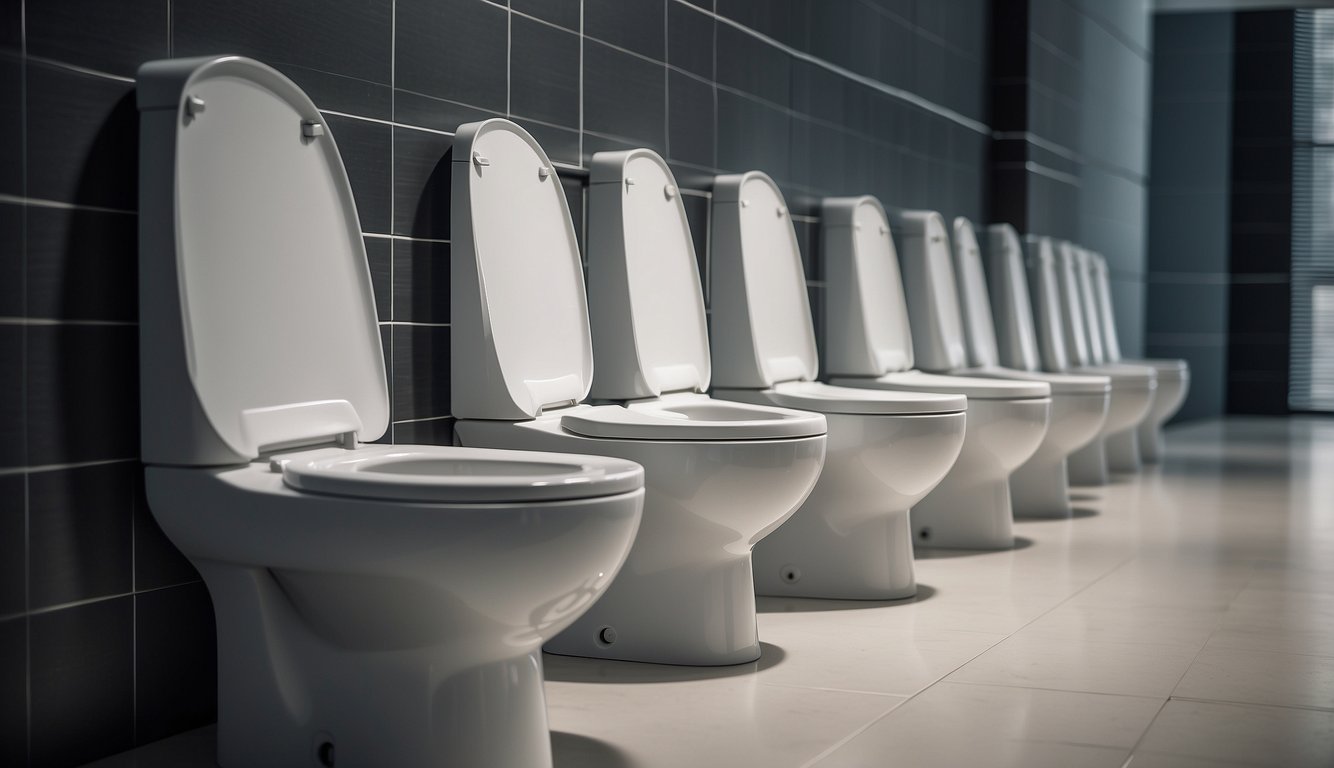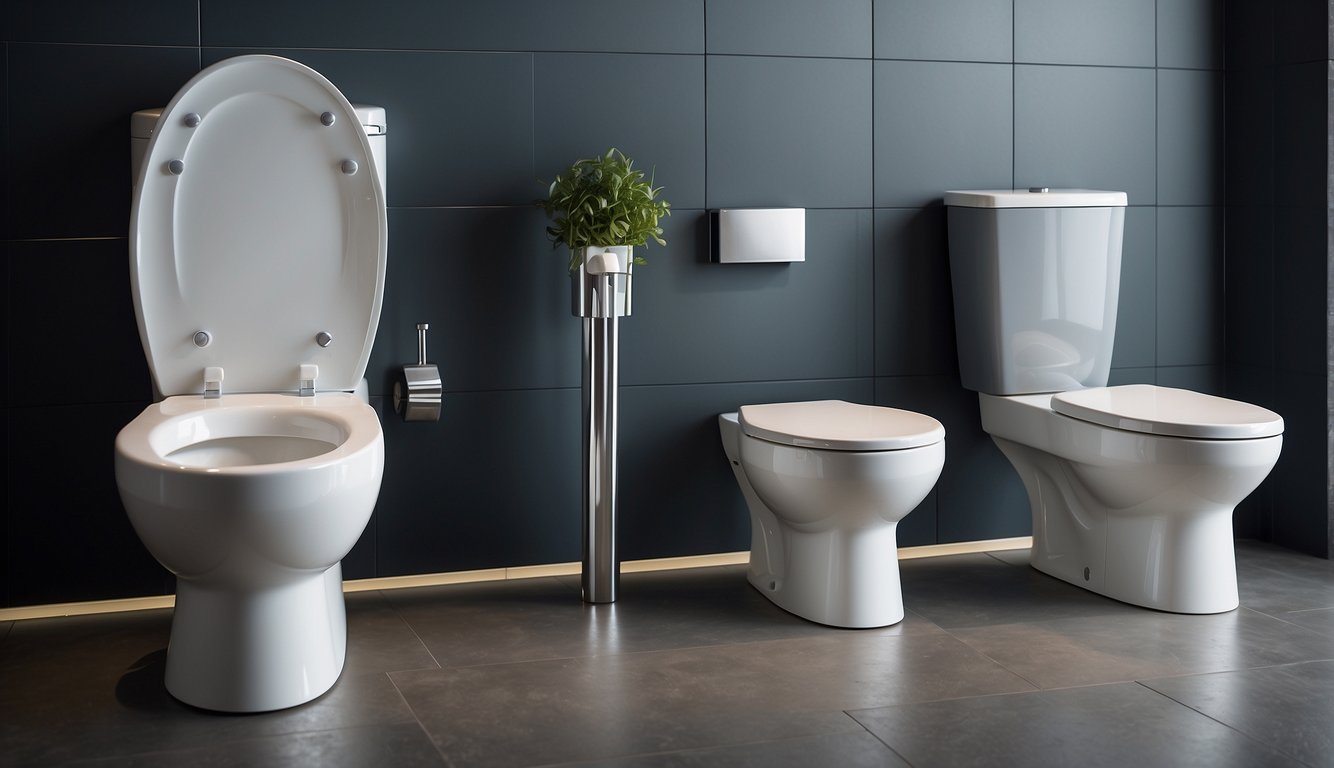Different Toilet Heights: Choosing the Right One for Comfort and Accessibility
Selecting the right toilet height is key to comfort and accessibility in any bathroom. As someone who has extensively researched and understands the practical implications of these measurements, I can confirm that toilet height affects both usability and compliance with accessibility standards. There are three main heights to consider: standard, comfort, and chair height, each offering different benefits.
A standard height toilet usually measures between 14.5 to 16 inches from the floor to the top of the seat, an optimal choice for those of shorter stature. On the other hand, comfort height toilets, which are about 17 to 19 inches with the seat included, offer a level that’s more comparable to sitting on a regular chair and are beneficial for tall individuals or those with mobility issues. Chair height toilets are even taller, sometimes exceeding 17 inches minus the seat, catering further to those seeking a toilet with an elevation that eases the process of sitting down and standing up.
My expertise in the field suggests that when selecting a toilet, individual needs and the specificities of the bathroom space should guide your choice. Whether it be compliance with the Americans with Disabilities Act (ADA) or simply personal preference for comfort, the dimensions of your toilet can make a significant difference in your daily routine.
Understanding Toilet Heights
Choosing the right toilet height is crucial for comfort and accessibility. I’ll guide you through this, drawing on my expertise to help you understand the differences and regulations.

Standard Vs. Comfort Height Toilets
Standard toilet heights are about 15 to 16 inches from the floor to the top of the seat, ideal for children and shorter individuals. Comfort height toilets, also known as chair height or right height toilets, typically measure 17 to 19 inches from floor to seat. They offer an easier experience for taller individuals and those with mobility issues.
ADA Compliance and Height Regulations
For public and commercial bathrooms, the Americans with Disabilities Act (ADA) sets forth regulations. ADA-compliant toilets have a seat height of 17 to 19 inches, similar to comfort height toilets, to accommodate people with disabilities better.
Toilet Height Terminology
Understanding the terms is key to making an informed choice:
- Bowl height: The distance from the floor to the rim of the toilet bowl.
- Seat height: The height of the toilet seat from the floor.
- Height type: Refers to different designations like standard, comfort, or chair height.
When considering a new toilet, think about the users’ needs and who will be most comfortable with the bowl and seat height. The right choice can enhance the bathroom experience for everyone.
Factors Affecting Toilet Height Selection
When choosing a toilet, the height is crucial for ensuring comfort and accessibility. Based on my experience, the right toilet height can make a significant difference in a bathroom’s functionality for individuals with varying needs.
Age and Mobility Considerations
For seniors and those with mobility challenges, a comfort height toilet—typically 17 to 19 inches from floor to seat—offers numerous advantages. It is close to the height of a standard chair, which makes sitting down and standing up more natural and requires less effort.
Young children, however, may find these heights too tall, making it difficult for their feet to reach the floor and potentially making toilet use less safe without auxiliary steps or supports.
- Pros for elderly/special needs: Easier to use, less strain on joints, compatible with grab bars for added safety.
- Cons for children: Too high, can hinder independence, may require additional accessories.
Comfort and Accessibility
Personal preference plays a significant role in the comfort level of a toilet. The standard height toilets—around 14.5 to 16 inches—are typically more comfortable for people of average height and children.
They provide a more natural position that can facilitate use. However, for the disabled and individuals with special needs, comfort height toilets can offer improved ease and safety, aligning with ADA compliance for better accessibility.
- Pros for disabled access: Meets ADA requirements, can be used with various mobility aids.
- Cons for average height use: Can be less comfortable for shorter users, may cause feet to dangle.
In my professional work, I’ve seen the importance of considering these factors to accommodate everyone’s needs while ensuring a safe and comfortable bathroom experience.
Installation and Bathroom Configuration

When installing a toilet, it’s crucial to consider both the bathroom layout and the toilet type. Proper installation ensures comfort, accessibility, and compliance with residential or commercial building standards.
Space and Dimension Constraints
In my experience, smaller bathrooms often require careful planning to accommodate fixtures. The dimensions of the space dictate the maximum size of the toilet that can be installed. Standard dimensions for a round toilet bowl are roughly 16 inches long and 14 inches wide, but ensure to leave at least 24 inches of clearance in front of the toilet for ADA compliance.
Types of Toilets and Their Heights
There are various models and types of toilets, each with different height considerations. The standard height for a floor-mounted toilet is 14-15 inches from floor to the top of the bowl.
For enhanced comfort, especially for tall individuals or those with mobility issues, Comfort Height toilets — which can be 17-19 inches high — are a suitable option. Wall-mounted toilets offer the flexibility of adjusting the height during installation but should typically be set so that the seat height is within the standard range.
Floor-Mounted Toilet Heights:
- Standard Height: 14-15 inches
- Comfort Height: 17-19 inches
Wall-Mounted Toilet Heights:
- Adjustable within standard or comfort height ranges
Fixtures and Accommodations
Fixtures such as the water supply line should be positioned so as not to interfere with the toilet’s dimensions and the user’s comfort. For residential installations, it’s also common to fit accessories such as lifts, risers, or a step stool to adapt to the needs of various users.
When installing a toilet, I ensure that there’s enough space around it for easy use of these accommodations, without cramping the bathroom space.
Choosing the Right Toilet for Your Home

When selecting a toilet, I focus on how a model’s features will enhance the comfort and functionality of a bathroom, considering factors like toilet seat height and bowl shape.
Evaluating Toilet Features and Models
Toilet Seat Height:
- Standard height toilets: Typically 14.5 to 16 inches from base to seat. Suited for shorter individuals or those who prefer a lower seat.
- Comfort height toilets (ADA compliant): About 17 to 19 inches tall, closer to chair height for easier sitting and standing. Ideal for taller individuals or those with joint issues.
Bowl Shape:
- Round: Compact and extends up to 28 inches from the wall. A good fit for smaller spaces.
- Elongated: Can measure up to 31 inches from the wall. Offers additional comfort and is a better choice to minimize constipation by facilitating a more natural position.
Toilets come in various features and models, and my approach involves matching them to the specific needs of a home. I always recommend prioritizing comfort and personal preference while also considering the space available in the bathroom.
Enhancing Comfort and Functionality
When enhancing a bathroom, comfort and functionality are paramount for daily use:
For Comfort:
- Comfort height toilets: Offer an easier experience for most adults. Especially beneficial for those with mobility challenges.
- Elongated bowls: Provide extra comfort, reducing strain.
For Functionality:
- FAQs reveal concerns over cleaning and space usage, which are essential to address. Models designed for easy cleaning and appropriate for a bathroom’s size contribute significantly to overall satisfaction.
In my experience, opting for a taller toilet with an elongated bowl generally elevates the bathroom experience, particularly in households with diverse needs. Personal preference should guide the final decision, as the right toilet blends seamlessly with both the practicalities of the household and the aesthetics of the home.
Let Us Know How We’re Doing!
Did this expertly prepared resource answer your question?
Do you have another question about home maintenance, home improvement projects, home appliance repair, or something else?
Get more information, send in questions and keep the discussion going by contacting the I’ll Just Fix It Myself company customer service team at at 1-800-928-1490 or Email us at [email protected]
